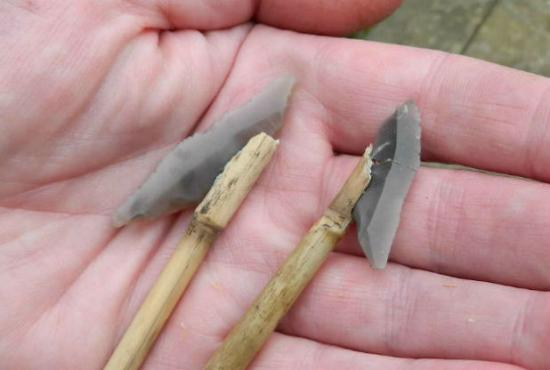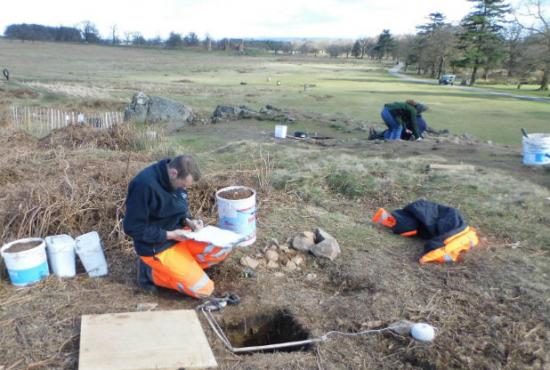Source - http://www.leicestermercury.co.uk/Bradgate-Park-hunting-ground-Ice-Age/story-20878605-detail/story.html#ixzz2xHHdJYR8

Creswellian stone tools – both the scraper and piercer were manufactured on longer blades but these have broken through use
Today it is a popular spot for nature lovers but even 15,000 years ago people were flocking to Bradgate Park.
Archaeologists have found arrow tips, spearheads and other things that suggest the park was a favoured hunting ground during the big thaw at the end of the last Ice Age.
The dig took place at Little Matlock Gorge, which is one of most popular areas of the park near to the car park in Newtown Linford.

Excavation of test pits at the Creswellian site overlooking the Lin floodplain and Bradgate House
Peter Tyldesley, of the Bradgate Park Trust, said: “Every year hundreds of thousands of our visitors walk past the site and it’s amazing to think that 15,000 years ago, when the population of the entire country was only dozens of people, hunters came to Bradgate Park.
“I think the gorge would have been an obvious place for hunting horses and reindeer because the herds would have been concentrated there as they passed through.
“The dig found flint from East Anglia and Wiltshire so these visitors had come a long way.”

Suggested hafting positions of Cheddar points on wooden spears – the arrangement provides both tip and barb
During the time in question, Leicestershire was emerging from about 10,000 years under a thick layer of ice and Great Britain was accessible on foot from the European mainland.
As the ice retreated towards the North Pole, a handful of humans migrated behind it, following horses, deer and reindeer north across Europe.
The findings will lead to further exploration of the park in the future and the flint tools will be put on display at Bradgate Park, where Mr Tyldesley is keen to create better educational displays for schools and other visitors.
He said: “We’re already planning for the exhibits and it’s going to tell a wonderful story.”
The dig was funded with help from Natural England and was carried out by the University of Leicester’s archeological service with the help of Rob Clough, a Bradgate Park Ranger, and Graham and Christine Coombes, who made the first finds of flint pieces in the park in 2001.
The experts said the flint found suggested the people who owned them were hunter-gatherers known as the Creswellians, a group descended from the Magdalenians in Europe.
Project officer Lynden Cooper said that while there had been several Creswellian finds around the UK, the Bradgate Park site was a very rare discovery of an open air site.
He said: “Rapid climate change about 15,000 years ago led to large tracts of new grassland territory becoming accessible to animals such as horses, deer and reindeer.
“A small band of humans also entered this new land of plenty and within a short period of time had evolved into the Creswellian people.
“Stone tool technology can be seen to reflect new hunting strategies required to cope with ecological changes resulting from the warming climate.”